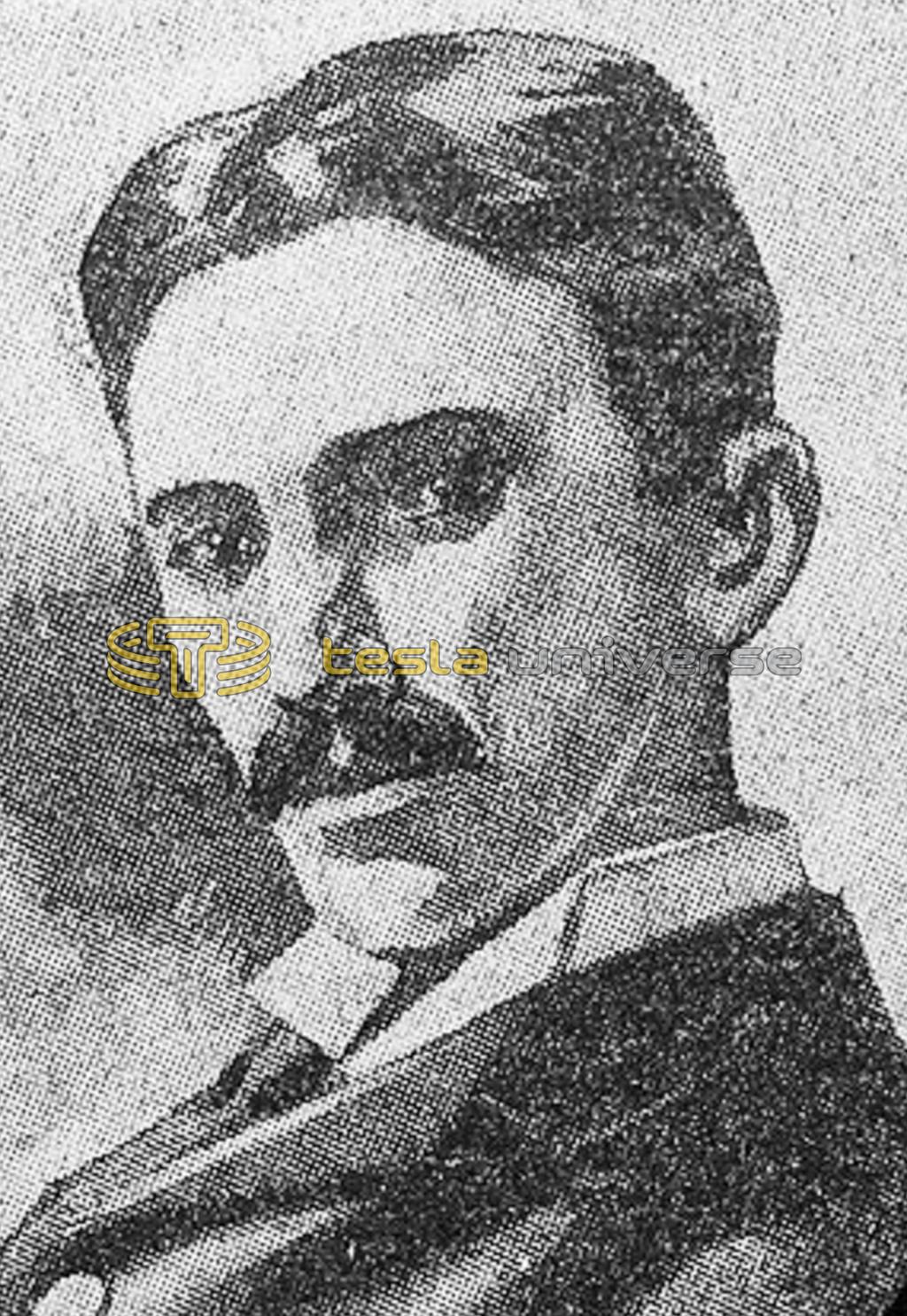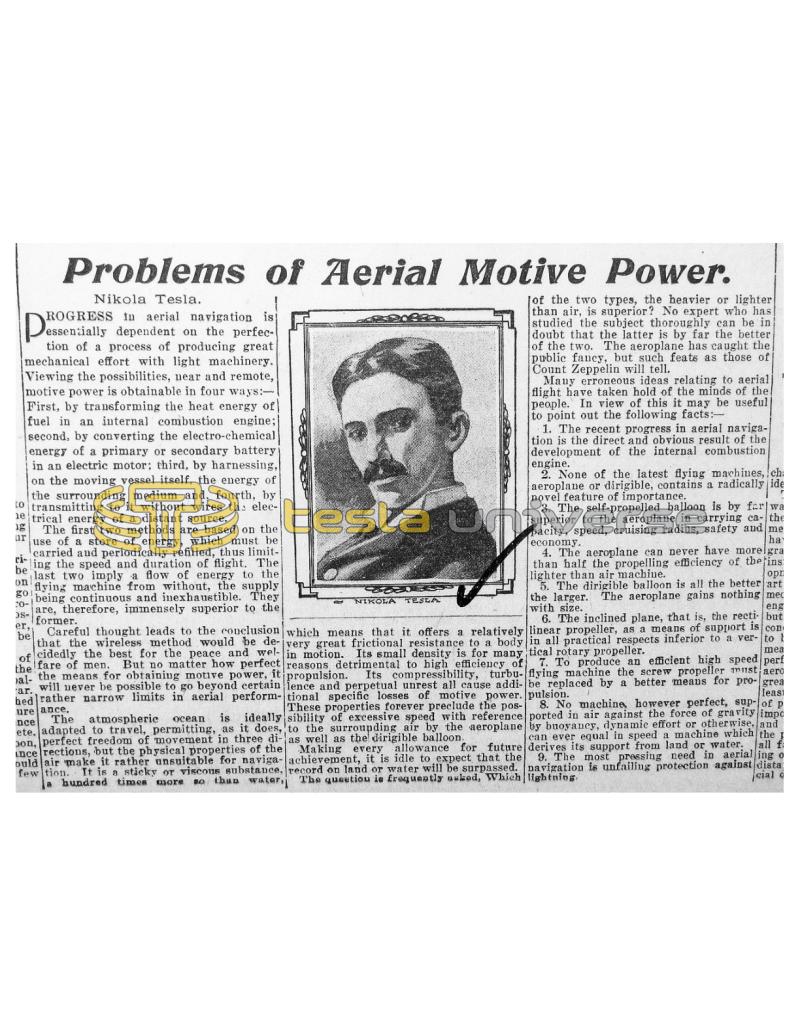
Nikola Tesla Articles
Problems of Aerial Motive Power
Progress in aerial navigation is essentially dependent on the perfection of a process of producing great mechanical effort with light machinery. Viewing the possibilities, near and remote, motive power is obtainable in four ways: - First, by transforming the heat energy of fuel in an internal combustion engine; second, by converting the electro-chemical energy of a primary or secondary battery in an electric motor; third, by harnessing, on the moving vessel itself, the energy of the surrounding medium and, fourth, by, transmitting to it without wires the electrical energy of a distant source.
The first two methods are based on the use of a store of energy, which must be carried and periodically refilled, thus limiting the speed and duration of flight. The last two imply a flow of energy to the flying machine from without, the supply being continuous and inexhaustible. They are therefore, immensely superior to the former.
Careful thought leads to the conclusion that the wireless method would be decidedly the best for the peace and welfare of men. But no matter how perfect the means for obtaining motive power, it will never be possible to go beyond certain rather narrow limits in aerial performance.
The atmospheric ocean is ideally adapted to travel, permitting, as it does, perfect freedom of movement in three directions, but the physical properties of the air make it rather unsuitable for navigation. It is a sticky or viscous substance, a hundred times more so than water, which means that it offers a relatively very great frictional resistance to a body in motion. Its small density is for many reasons detrimental to high efficiency of propulsion. Its compressibility, turbulence and perpetual unrest all cause additional specific losses of motive power. These properties forever preclude the possibility of excessive speed with reference to the surrounding air by the aeroplane as well as the dirigable balloon.
Making every allowance for future achievement, it is idle to expect that the record on land or water will be surpassed.
The question is frequently asked, Which of the two types, the heavier or lighter than air, is superior? No expert who has studied the subject thoroughly can be in doubt that the latter is by far the better of the two. The aeroplane has caught the public fancy, but such feats as those of Count Zeppelin will tell.
Many erroneous ideas relating to aerial flight have taken hold of the minds of the people. In view of this it may be useful to point out the following facts:-
- The recent progress in aerial navigation is the direct and obvious result of the development of the internal combustion engine.
- None of the latest flying machines, aeroplane or dirigible, contains a radically novel feature of importance.
- The self-propelled balloon is by far superior to the aeroplane in carrying capacity, speed, cruising radius, safety and economy.
- The aeroplane can never have more than half the propelling efficiency of the lighter than air machine.
- The dirigible balloon is all the better the larger. The aeroplane gains nothing with size.
- The inclined plane, that is, the rectilinear propeller, as a means of support is in all practical respects inferior to a vertical rotary propeller.
- To produce an efficient high speed flying machine the screw propeller must be replaced by a better means for propulsion.
- No machine, however perfect, supported in air against the force of gravity by buoyancy, dynamic effort or otherwise, can ever equal in speed a machine which derives its support from land or water.
- The most pressing need in aerial navigation is unfailing protection against lightning.

